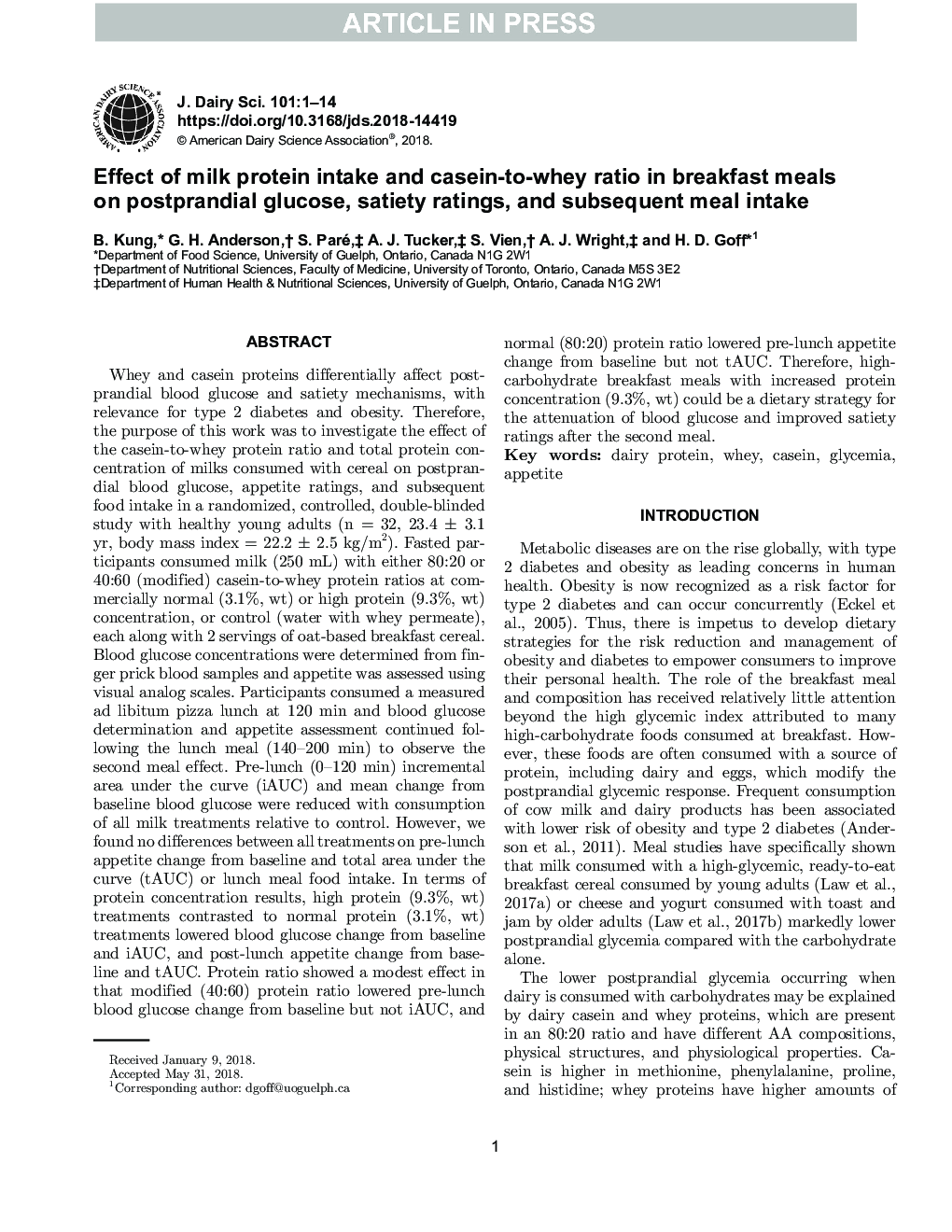| کد مقاله | کد نشریه | سال انتشار | مقاله انگلیسی | نسخه تمام متن |
|---|---|---|---|---|
| 10158041 | 1666505 | 2018 | 14 صفحه PDF | دانلود رایگان |
عنوان انگلیسی مقاله ISI
Effect of milk protein intake and casein-to-whey ratio in breakfast meals on postprandial glucose, satiety ratings, and subsequent meal intake
ترجمه فارسی عنوان
اثر مصرف پروتئین شیر و نسبت کازئین به شیر در غذاهای صبحانه بر میزان گلوکز پس از غذا، میزان اشباع غذا و مصرف خوراک بعد
دانلود مقاله + سفارش ترجمه
دانلود مقاله ISI انگلیسی
رایگان برای ایرانیان
کلمات کلیدی
پروتئین لبنی کشک، کازئین، گلیسمی، اشتها
موضوعات مرتبط
علوم زیستی و بیوفناوری
علوم کشاورزی و بیولوژیک
علوم دامی و جانورشناسی
چکیده انگلیسی
Whey and casein proteins differentially affect postprandial blood glucose and satiety mechanisms, with relevance for type 2 diabetes and obesity. Therefore, the purpose of this work was to investigate the effect of the casein-to-whey protein ratio and total protein concentration of milks consumed with cereal on postprandial blood glucose, appetite ratings, and subsequent food intake in a randomized, controlled, double-blinded study with healthy young adults (n = 32, 23.4 ± 3.1 yr, body mass index = 22.2 ± 2.5 kg/m2). Fasted participants consumed milk (250 mL) with either 80:20 or 40:60 (modified) casein-to-whey protein ratios at commercially normal (3.1%, wt) or high protein (9.3%, wt) concentration, or control (water with whey permeate), each along with 2 servings of oat-based breakfast cereal. Blood glucose concentrations were determined from finger prick blood samples and appetite was assessed using visual analog scales. Participants consumed a measured ad libitum pizza lunch at 120 min and blood glucose determination and appetite assessment continued following the lunch meal (140-200 min) to observe the second meal effect. Pre-lunch (0-120 min) incremental area under the curve (iAUC) and mean change from baseline blood glucose were reduced with consumption of all milk treatments relative to control. However, we found no differences between all treatments on pre-lunch appetite change from baseline and total area under the curve (tAUC) or lunch meal food intake. In terms of protein concentration results, high protein (9.3%, wt) treatments contrasted to normal protein (3.1%, wt) treatments lowered blood glucose change from baseline and iAUC, and post-lunch appetite change from baseline and tAUC. Protein ratio showed a modest effect in that modified (40:60) protein ratio lowered pre-lunch blood glucose change from baseline but not iAUC, and normal (80:20) protein ratio lowered pre-lunch appetite change from baseline but not tAUC. Therefore, high-carbohydrate breakfast meals with increased protein concentration (9.3%, wt) could be a dietary strategy for the attenuation of blood glucose and improved satiety ratings after the second meal.
ناشر
Database: Elsevier - ScienceDirect (ساینس دایرکت)
Journal: Journal of Dairy Science - Volume 101, Issue 10, October 2018, Pages 8688-8701
Journal: Journal of Dairy Science - Volume 101, Issue 10, October 2018, Pages 8688-8701
نویسندگان
B. Kung, G.H. Anderson, S. Paré, A.J. Tucker, S. Vien, A.J. Wright, H.D. Goff,
